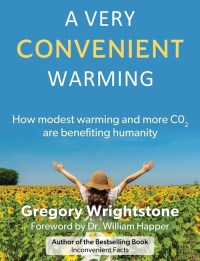 The Statue of Liberty may be at risk from sea level rise, severe weather, and wind-driven storm surges. That’s according to a new report by the United Nations Educational Scientific, and Cultural Organization (UNESCO) on famous landmarks that may be at risk from climate change. The report was co-published by the Union of Concerned Scientists, a global warming activist group that has invested heavily in promoting climate change anxiety.
The Statue of Liberty may be at risk from sea level rise, severe weather, and wind-driven storm surges. That’s according to a new report by the United Nations Educational Scientific, and Cultural Organization (UNESCO) on famous landmarks that may be at risk from climate change. The report was co-published by the Union of Concerned Scientists, a global warming activist group that has invested heavily in promoting climate change anxiety.
Less than four years ago, Hurricane Sandy swept through the New Jersey and New York area as a Category 1 hurricane and wreaked havoc on Liberty Island and Ellis Island’s low-lying edifices. When it finally made landfall, it was downgraded to a tropical depression. But that was enough to “damage or destroy much of the infrastructure on both islands including electrical, water, sewage, security and telephone systems.”
Though no damage was caused to Lady Liberty or her pedestal, the facilities and areas closest to sea level did experience damage. Two things converged on that day in October 2012: An unusually high tide and strong, gale-force winds. The last time a strong tropical storm hit the NYC area was in the 1950s. The difference today is that more people and houses are now in areas once uninhabited. And carbon dioxide (CO2) levels were at 350 ppm, and not today’s level of 400 ppm. Storms should be increasing, but they aren’t.
Hurricanes and storm surges.
The U.S. is in a hurricane “drought,” meaning we haven’t had a Cat-3 or higher storm reach landfall for 127 months (about 11 years). And computer models, which have been vastly overestimating sea level rise, now forecast lower intensity storms but with higher storm surges. When Sandy struck, it was estimated that sea level rise was about 0.5 meters (1.6 feet) since 1850. That’s approximately three millimeters (0.12 inches) a year, about the same rate since the Earth left the last glaciation 15,000 years ago. Sea level rise goes up and down for a variety of reasons and have differing rates across the globe.
The computer models that many scientists rely on have also been overstating how much climate change the Earth will experience with increased CO2 levels. The same simulations that have predicted catastrophic warming failed to foresee an 18-year-long global warming “hiatus” that was interrupted by the strong, naturally occurring El Ni√±o of 2015 – 2016.
















